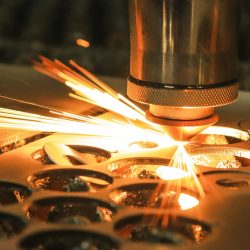What is CAD Design?
The acronym CAD stands for computer-aided design. It is sometimes also referred to as computer-aided design and drafting (CADD). CAD design refers to the use of computer software to create 2D drawings and 3D models of components, to a scale that reflects how they would appear and work in the real world. It documents the design process and allows for a render to be examined from any vantage point.
The CAD software that is used provides an imaginary space where various aspects of the part can be worked on, including material, thickness, height, colour, and so on. This technology has proven helpful to professionals in an array of fields including engineering, architecture, and graphic design.
CAD software has evolved greatly since the early days of the 1960s SketchPad. Currently, there is far more advanced software in use. Tools like SolidWorks and Fusion 360 are immensely popular in the product design business, while ArchiCAD and Adobe Photoshop are often utilized by architects to chart the various elements that go into construction projects.
CAD/CAM
CAM refers to computer-aided manufacturing that relies on geometric design data to manipulate automated machinery. These systems have become well integrated with CAD, allowing for better links between the design and manufacturing processes, hence CAD/CAM.
This integration has helped to speed up the production processes and provide designers with better control at the fabrication stage.
Pros and Cons of CAD
Pros
There is a good selection of CAD/CAM software to be found in the market. Many are tailored to specific professions, with features and tools customized to cater to particular demands.
Precise rendering is more easily done through CAD design than with hand drawing. The user can incorporate as much detail as they want, allowing for as realistic a representation of the real output when manufacturing. The ability to examine a component from a 360° view cannot also be understated.
The visualisations can be easily updated with changes tracked, and some software even allowing for simulations to be run to test for possible failures.
Even without simulations, there is an improved chance of getting designs right with CAD before moving to CAM for actual physical production to take place. The results have proven more accurate and successful with CAD/CAM than with traditional drafting and fabrication processes.
Cons
The CAD software the professionals can use requires some level of training to grasp. Older professionals may struggle to adapt to their application. There is sometimes also an added cost involved in accessing some of these tools as some are subscription-based and investment in suitable hardware to facilitate the design and production processes.
Conclusion
CAD software is continually improving with developers creating more powerful tools and features for professionals to work with. The sophistication of visualisations and testing applications can also be expected to keep upgrading. Many technical courses no longer train students on how to hand draw. They now offer CAD classes, so students are better equipped to practically utilize these high-level tools that have proven much more efficient and necessary to the various fields.
Yorkshire Laser is one of the UK’s leading laser metal cutting companies, offering bespoke and exceptional laser and mental fabrication solutions. Get in touch for a personalised quote today!

